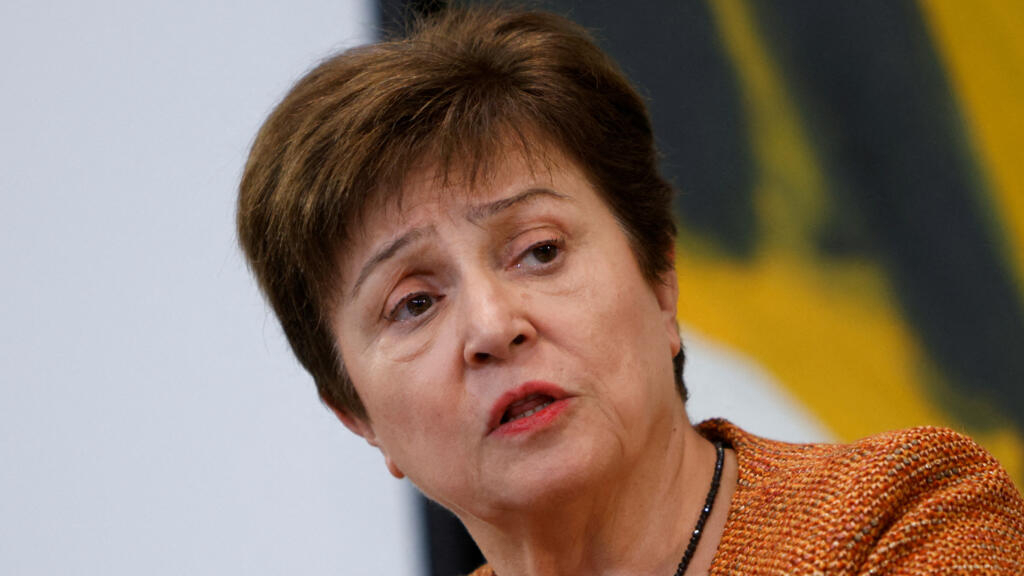For much of the world economy, 2023 is going to be a difficult year, as the main engines of global growth – the United States, Europe and China – all experience weakening activity, said the director of the International Monetary Fund. .
The new year is going to be “tougher than the one we left behind”, declared the director of the International Monetary Fund, IMF, Kristalina Georgieva, on the Sunday news program of ‘CBS’, ‘Face the Nation’.
“Why? Because the big three economies, the US, the EU and China, are slowing down simultaneously,” he said.
In October, the IMF cut its outlook for global economic growth for 2023, reflecting the continuing drag from the war in Ukraine, as well as inflationary pressures and high interest rates engineered by central banks like the US Federal Reserve with the objective of curbing these pressures on prices.
China has since scrapped its ‘zero Covid’ policy and embarked on a chaotic reopening of its economy, though consumers remain wary of rising Covid-19 cases. In his first public comments since the policy change, President Xi Jinping in a New Year speech on Saturday called for more effort and unity as China enters a “new phase.”
“For the first time in 40 years, China’s growth in 2022 is likely to be equal to or less than global growth,” Georgieva said.
Meanwhile, a “wildfire” of Covid-19 infections in the coming months is likely to hit its economy further this year and drag down both regional and global growth, said Georgieva, who traveled to China on IMF business to end of last month.
“I was in China last week, in a bubble in a city where there is no Covid,” he said. “But that’s not going to last once people start traveling.”
“Over the next two months, it will be tough for China, and the impact on Chinese growth will be negative, the impact on the region will be negative, the impact on global growth will be negative,” he said.
In its October forecast, the IMF put China’s gross domestic product growth at 3.2% last year, on the same level as the Fund’s global outlook for 2022. At the time, it also forecast China’s annual growth it would accelerate in 2023 to 4.4%, while world activity would continue to slow down.
His comments, however, suggest another cut to China’s and global growth prospects could come later this month, when the IMF unveils its updated forecasts during the World Economic Forum in Davos, Switzerland.
The US economy, the most resilient
Meanwhile, according to Georgieva, the US economy remains on the sidelines and could avoid the full-blown contraction that is likely to afflict up to a third of the world’s economies.
“The US is the most resilient country,” he said, and “could avoid recession.” We see that the labor market remains quite strong.”
X
But this fact alone presents a risk, as it may hamper the progress the Federal Reserve needs to make to bring US inflation back to its target level from the highest levels in four decades touched last year.
Inflation showed signs of topping out at the end of 2022, but by the Federal Reserve’s preferred measure, it’s still nearly three times its 2% target.
“This is a mixed blessing, because if the job market is very strong, the Federal Reserve may have to keep interest rates higher for longer to reduce inflation,” Georgieva said.
Last year, in the most aggressive tightening since the early 1980s, the Federal Reserve raised its benchmark interest rate from near zero in March to the current range of 4.25% to 4.50%, and Federal Reserve officials projected last month that it will surpass the 5% mark in 2023, a level not seen since 2007.
In fact, the US labor market will be one of the main focuses of attention for Federal Reserve officials, who would like to see the demand for labor decrease to help reduce price pressures.
The first week of the new year brings with it a number of key jobs data, such as Friday’s monthly Nonfarm Payrolls report, which is expected to show that the US economy added another 200,000 jobs in December and that the rate Unemployment remained at 3.7%, near the lowest level since the 1960s.
Reuters
This article was adapted from its original in English.












